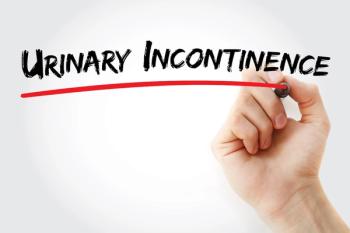
The Role of Community, Structural Factors in Financial Hardship Among Cancer Survivors
Social vulnerability and economic disadvantages exacerbate financial hardship in cancer survivors, according to one study.
Nearly 50% of
The cross-sectional study published in
“We hypothesized that adverse community-level social determinants of health may exacerbate financial hardship for socioeconomically disadvantaged populations,” wrote the researchers of the study. “For these reasons, we estimated the prevalence of financial hardship among cancer survivors across cancer types and investigated associations with individual- and community-level characteristics.”
Cancer survivors often face significant financial hardship, which can undermine treatment adherence, quality of life, and survival. In 2019, a report from the CDC found that cancer survivors of working age had significantly higher annual out-of-pocket (OOP) medical expenditures than those without a cancer history.2 Additionally, more than a quarter of adults aged 18 to 64 years reported they had trouble paying bills because of cancer, and over one-third reported psychological distress.
In this study, the researchers analyzed data from the 2021 Health Information National Trends Survey–Surveillance, Epidemiology, and End Results (HINTS-SEER), sampled from 3 SEER registries.1 The study included respondents of all ages, cancer types, and disease stages from the HINTS-SEER cohort.
The primary outcome was the patient-reported experience of cancer-related financial hardship, categorized into 4 levels: not at all, a little, some, or a lot. The main exposure variable was the Social Vulnerability Index (SVI), which measures the social vulnerability of communities based on factors like socioeconomic status, household composition, minority status, and housing type.
Additionally, the researchers evaluated covariates such as age, sex, education level, income, insurance status, and SEER cancer stage. Individual-level race and ethnicity were omitted because community-level race and ethnicity are already incorporated into the SVI.
A total of 1212 respondents representing more than 400,000 cancer survivors were included in the analysis. The median age of respondents was 72 years, with an IQR of 65 to 79 years. Additionally, 59.1% of respondents had completed college, 56.5% earned more than $75,000, 0.5% had private or employer-based health insurance, and 67.8% had localized cancer.
Approximately 50% of cancer survivors reported experiencing some level of financial hardship related to their cancer diagnosis and treatment. Specifically, 56.4% reported no financial hardship, 22.1% reported a little, 15.0% reported some, and 6.5% reported a lot of financial hardship.
Associations with Social Vulnerability
Higher SVI scores were independently associated with increased levels of financial hardship (adjusted OR [aOR], 1.80; 95% CI, 1.00-3.21), indicating that survivors in more socially vulnerable communities faced greater financial challenges. An increase in SVI of 0.01 was linked to a lower probability of reporting no financial hardship and a higher probability of reporting some degree of hardship.
Impact of Age and Income
Younger survivors aged 50 to 59 years had significantly higher odds of experiencing financial hardship compared with older survivors (aOR, 3.66; 95% CI, 2.37-5.67). Lower income levels between $35,000 to $74,999 were also strongly associated with increased financial hardship among cancer survivors (aOR, 3.55; 95% CI, 1.94-6.48).
Effects of Cancer Stage and Insurance Type
The analysis also revealed that survivors with advanced cancer stages were more likely to face financial hardship (aOR, 1.92; 95% CI, 1.47-2.51). Those on federal health insurance such as Medicare also had higher odds of experiencing financial hardship compared with those with private insurance (aOR, 1.43; 95% CI, 1.02-2.00).
These findings highlight the extent of financial hardship many cancer survivors face, with younger age, lower income, advanced cancer stages, and residing in socially vulnerable communities being significant risk factors.
“Although policy efforts to curb the costs of cancer care are essential, acknowledging the role of community and structural barriers and identifying socially vulnerable populations for targeted interventions represent a potential strategy toward mitigating financial hardship and delivering equitable cancer care.”
References
1. Dhir A, Stensland KD, Herrel LA, et al. Individual- and community-level risk factors of cancer-related financial hardship among cancer survivors. JAMA Netw Open. 2024;7(8):e2429286. doi:10.1001/jamanetworkopen.2024.29286
2. Inserro, A. Financial hardship, psychological distress hurting working-age cancer survivors, CDC says. AJMC®. June 6, 2019. Accessed August 26, 2024.
Newsletter
Stay ahead of policy, cost, and value—subscribe to AJMC for expert insights at the intersection of clinical care and health economics.





























































